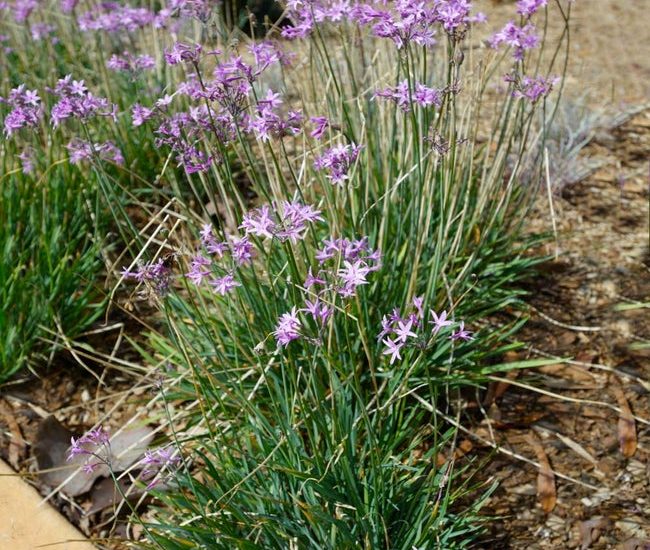The Key Differences Between Finishing Mower Vs. Bush Hog
Many individuals are stuck between using a finishing mower and a bush hog when working on the field with tractors. People must first comprehend the distinctions between these different types of farm types of machinery.
A bush hog is designed for rough-cutting high grasses and weeds on your land, whereas a finishing mower is designed to make the mowed area look well-groomed. The blades are the most significant part of this change.
In this article, I’ll go over all there is to know about finishing mowers and bush hogs, as well as provide some final recommendations to help you make a better decision.
Thus, take a seat and read the article thoroughly.
What are the differences between a Finishing Mower Vs. a Bush Hog?
1. Functionality:
A finish mower is a tractor-mounted rotary mower. Three rotating shafts and three free-swinging blades make up the system.
Staggered wheels on a finish mower help to keep dirt from compacting.
A finish mower is designed to cut huge expanses of grass and has a big, flat deck.
When commercial lawn-service providers mow residential or commercial properties, a finishing mower is frequently seen.
A brush hog, sometimes known as a bush hog, is a rotary mower that is normally mounted on the back of a farm tractor, similar to a finishing mower.
The blades are on hinges rather than being permanently attached like a lawnmower blade.
The rotating blades are not honed and are often rather blunt, the reason why blades are to beat through dense plant growth.
2. Usage:
Finish mowers are pull-behind attachments that link to tractors or ATVs to mow parks, schools, large yards/estates, roadways, and sports fields efficiently.
A finish mower can be considered to be a more powerful version of a basic push mower. It’s meant to cut and keep a grass surface, not to slash through overgrown brushy portions of the lawn.
Moreover, on an already maintained lawn, a finish mower creates a smooth, finished appearance. It’s made for light work and won’t cut through thickets or brushes.
Bush hogs can clip weeds that would be too much for a standard riding lawnmower around your structures and property.
Graziers utilize brush hogs to mow their grazing paddocks regularly, usually once a year.
They can also be used to mow down mature hayfields that you didn’t have time to mow. This replaces the soil with beneficial organic matter.
Moreover, brush hogs are practically required for mowing routes that allow you to install temporary electric net fences.
3. Reliability:
Finish mowers usually use three wheels to help decrease soil compaction and turn the machine while in use.
With spinning shafts and many blades, the mowing deck is broad and level. The blade deck may be adjusted to cut the grass to the desired height.
A finish mower’s blades are sharper and spin at a greater RPM. The faster, more tapered blade is vital for trimming grass without shredding the top layer, ensuring a neat and healthy lawn.
A bush hog has a heavy, sturdy blade that isn’t as sharp as a typical mower blade. Brush hogs cut through thick, dense vegetation by combining the fast speed of the spinning blade with their heavier weight.
Brush or bush hogs don’t use a sharp blade to cut through thick vegetation since the edge would quickly wear and require continual maintenance.
They are fantastic for quickly cutting large areas of overgrown vegetation.
4. Efficiency:
The best thing about a finish mower is that they come in a wide range of widths, from 60 inches to ten feet or more.
A customized deck size lets you finish your yard in fewer tractor passes while still fitting between trees or other obstructions, allowing you to finish the work quickly.
They’re designed to cut close to barriers and are compatible with any size of tractor. Clippings are uniformly distributed by the rear discharge.
These mowers are ideal for cutting fescue and other turf grasses with a smooth, professional cut.
Brush hogs can be used to keep growth down along roadways, meadows, woodland margins, and other locations outside of a homeowner’s main grassy lawn area.
Brush hogs can be employed to protect valuable early successional habitat by keeping areas on.
They’re the best way to restore old fields and keep a range of open habitat types on a farm. The presence of a diverse range of species is aided by a diverse range of habitats.
5. Cost:
It’s necessary to know your budget when deciding between a finishing mower and a bush hog for working on your property.
Finishing mowers are less expensive than bush or brush hogs, coming at around $5,600, and are appropriate for numerous applications.
On the other hand, a brush hog for a smaller tractor can cost anywhere from $2,000 to $4,000.
Larger machines, such as ten-footers, can cost upwards of $10,000 and require an 80-horsepower tractor to operate.
Finishing Mower Vs. Bush Hog: Which One to Choose Finally?
It’s tough to tell the final choice between a finishing mower and a bush based on their characteristics.
However, I’ve outlined the factors to consider when buying a finishing mower and bush hog. I’d like to offer you an idea of what you should get without confusing you any further.
When dealing with large stretches of grass or dense, tall, weedy areas of vegetation, both finishing mower and bush hog perform an excellent job of saving time and tension.
It is worth noting that your finishing mower’s deck should be positioned with the front a little lower than the back for a better cut and reduced energy usage.
The front-half spin of the blades cuts the grass, while the back-half spin floats over the cut grass, preventing a shredded appearance.
Having a tow-behind bush hog, on the other hand, necessitates learning how to operate one safely.
Can a Bush Hog be Converted into a Finishing Mower?
A finishing mower and a bush hog have a lot in common. As a result, you can turn your bush hog into a finishing mower.
To raise the deck on the bush hog, use the tractor hydraulics. Place jack stands beneath the deck once it’s been elevated to keep it from falling.
The bush hog blades should be removed. A central nut will secure each blade to a bearing shaft.
Remove each blade and unscrew each nut. If the blade becomes stuck on the bearing shaft after being unscrewed, simply tap it until it falls off.
Replace the bush hog blades with finishing mower blades, and the nuts as well. Lower the deck and remove the jack stands.
Bring the deck to a flat surface. The clevis pin and holed adjustment system are used by several bush hogs. Allow the deck to drop down one hole by removing the clevis pin.
Summary
When picking between a finishing mower and a bush hog, consider all of the facts.
You can’t go wrong with any of these high-quality mowers, regardless of the brand. Both will give you the smooth, flawless cut you desire for a lawn that will be the talk of the neighborhood.
Related Posts:


